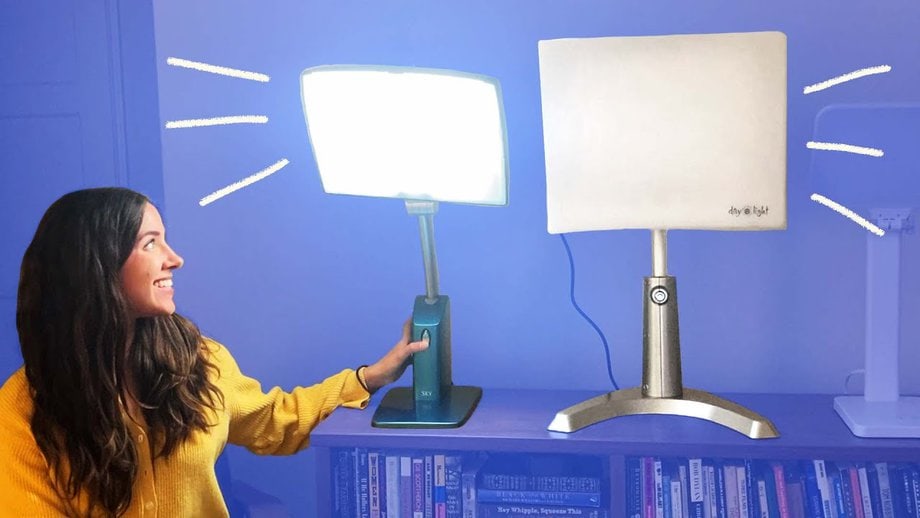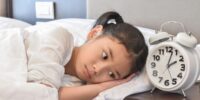Can Light Therapy Improve Sleep Patterns in Winter Months

This article explores the potential of light therapy in improving sleep patterns during the winter months.
It examines the impact of winter darkness on sleep patterns and presents an understanding of light therapy and its benefits.
The article also delves into the role of light therapy in regulating circadian rhythms and its effectiveness in addressing Seasonal Affective Disorder (SAD).
Additionally, practical tips for incorporating light therapy into the winter sleep routine will be provided.
Key Takeaways
- Reduction in daylight negatively affects sleep patterns
- Light therapy can regulate circadian rhythms and improve sleep quality
- Light therapy is effective in managing insomnia and adjusting the timing of circadian rhythms
- Light therapy is an effective treatment option for individuals with Seasonal Affective Disorder (SAD) and can alleviate symptoms
The Impact of Winter Darkness on Sleep Patterns
The reduction in daylight during winter months has been found to negatively affect sleep patterns. Winter melatonin production is influenced by the amount of light exposure, particularly in the morning. Melatonin is a hormone that regulates sleep and wakefulness.
Reduced exposure to daylight in the winter can disrupt the natural circadian rhythm, leading to difficulties falling asleep and waking up. Light exposure, especially in the morning, helps to regulate the production of melatonin and maintain a healthy sleep-wake cycle. Studies have shown that individuals exposed to bright light in the morning experience improved sleep quality and duration.
Light therapy, which involves exposure to bright artificial light, can be an effective treatment for sleep disturbances caused by reduced daylight in the winter months.
Understanding Light Therapy and Its Benefits
One effective approach for enhancing circadian rhythms and reducing seasonal affective disorder symptoms involves exposure to specific wavelengths of light. Light therapy, also known as phototherapy, is a non-invasive treatment that utilizes artificial light sources to simulate natural sunlight. This therapy has been shown to have numerous benefits, including improving sleep patterns, boosting mood, and increasing energy levels. Light therapy techniques vary, but typically involve sitting near a light box or wearing a specialized light therapy device for a specified amount of time each day. The light emitted from these devices mimics the natural outdoor light and helps to regulate the body’s internal clock. By incorporating light therapy into daily routines, individuals can experience significant improvements in their sleep quality, overall well-being, and mood stability.
| Light Therapy Technique | Description | Benefits |
|---|---|---|
| Light Box | A device that emits bright light and is typically used for 30 minutes to 2 hours per day. | – Regulates circadian rhythms – Reduces symptoms of seasonal affective disorder – Improves sleep patterns |
| Dawn Simulator | A device that gradually increases light intensity, mimicking the rising sun, to gently wake the individual. | – Helps regulate sleep-wake cycle – Enhances mood and energy levels – Reduces grogginess upon waking |
| Light Visor | A portable device worn like a visor that emits bright light and is typically used for 30 minutes to 1 hour per day. | – Allows for mobility during light therapy – Improves sleep quality and duration – Enhances alertness and cognitive function |
How Light Therapy Can Help Regulate Circadian Rhythms
Exposure to specific wavelengths of artificial light sources can aid in the regulation of circadian rhythms. Light therapy, also known as phototherapy, is a non-pharmacological approach that has been found to be effective in improving sleep quality and managing insomnia.
Here are three ways in which light therapy can help regulate circadian rhythms:
- Resetting the internal clock: Light therapy can help reset the body’s internal clock, which is responsible for regulating sleep-wake cycles. By exposing individuals to bright light in the morning or evening, depending on their desired sleep schedule, light therapy can help adjust the timing of their circadian rhythms.
- Melatonin regulation: Light exposure influences the production of melatonin, a hormone that plays a crucial role in sleep regulation. Light therapy can help suppress melatonin production in the morning, promoting wakefulness, and increase melatonin production in the evening, facilitating sleep onset.
- Enhancing alertness: Light therapy can increase alertness and cognitive performance during the day, leading to improved productivity and reduced daytime sleepiness. This can further contribute to better sleep quality at night.
Exploring the Effectiveness of Light Therapy for Seasonal Affective Disorder (SAD
Research has shown that specific wavelengths of artificial light can effectively alleviate symptoms of Seasonal Affective Disorder (SAD) by regulating circadian rhythms.
Seasonal Affective Disorder is a subtype of depression that occurs seasonally, typically during the winter months when daylight is limited.
Light therapy, also known as phototherapy, is a common treatment option for individuals with SAD. This therapy involves exposure to artificial light that simulates natural sunlight.
The effectiveness of light therapy for SAD has been extensively studied and has shown significant positive outcomes. It has been found to improve mood, reduce symptoms of depression, and regulate sleep patterns in individuals with SAD.
The mechanism behind the effectiveness of light therapy lies in its ability to mimic natural sunlight and stimulate the brain’s production of serotonin, a neurotransmitter associated with mood regulation.
Overall, light therapy has proven to be an effective treatment option for individuals suffering from Seasonal Affective Disorder.
Practical Tips for Incorporating Light Therapy Into Your Winter Sleep Routine
A practical approach to incorporating light therapy into a winter sleep routine involves establishing a regular schedule for light exposure and ensuring the light box is positioned at an appropriate distance and angle.
Here are three practical tips for effectively incorporating light therapy into your winter sleep routine:
- Determine the optimal time for light exposure: It is recommended to expose yourself to bright light therapy in the morning, as this can help regulate your circadian rhythm and improve sleep patterns. Start with 30 minutes of light exposure and gradually increase the time as needed.
- Position the light box correctly: Place the light box at a distance of about 16-24 inches from your face, with the light shining indirectly into your eyes. Angle the light slightly downward to maximize its effectiveness.
- Be consistent with your routine: Set a specific time each day for light therapy and stick to it. Consistency is key to reaping the benefits of light therapy for improved sleep patterns.
Frequently Asked Questions
Are There Any Potential Side Effects or Risks Associated With Light Therapy for Improving Sleep Patterns in Winter?
Potential risks and side effects of light therapy for improving sleep patterns in winter include eye strain, headache, and insomnia. Safety concerns with light therapy for sleep improvement in winter months should be considered and monitored.
How Long Does It Typically Take for Individuals to See Noticeable Improvements in Their Sleep Patterns After Starting Light Therapy?
The average duration for individuals to see noticeable improvements in their sleep patterns after starting light therapy varies and requires further effectiveness evaluation.
Can Light Therapy Be Used as a Standalone Treatment or Does It Need to Be Combined With Other Methods to Be Effective?
The effectiveness of light therapy as a standalone treatment for improving sleep patterns remains uncertain. Further research is needed to determine if combining light therapy with other methods would yield more significant results.
Is Light Therapy Suitable for Individuals With Pre-Existing Sleep Disorders or Medical Conditions?
Effectiveness of light therapy in individuals with pre-existing sleep disorders or medical conditions is still being studied. Precautions should be taken, as light therapy may interact with certain medications or worsen symptoms in some cases.
Are There Any Specific Types or Brands of Light Therapy Devices That Are Recommended for Improving Sleep Patterns in Winter Months?
Specific types of light therapy devices recommended for improving sleep patterns in winter months include dawn simulators and light boxes. Benefits of using light therapy for sleep improvement in winter include regulating circadian rhythm and increasing serotonin levels.









